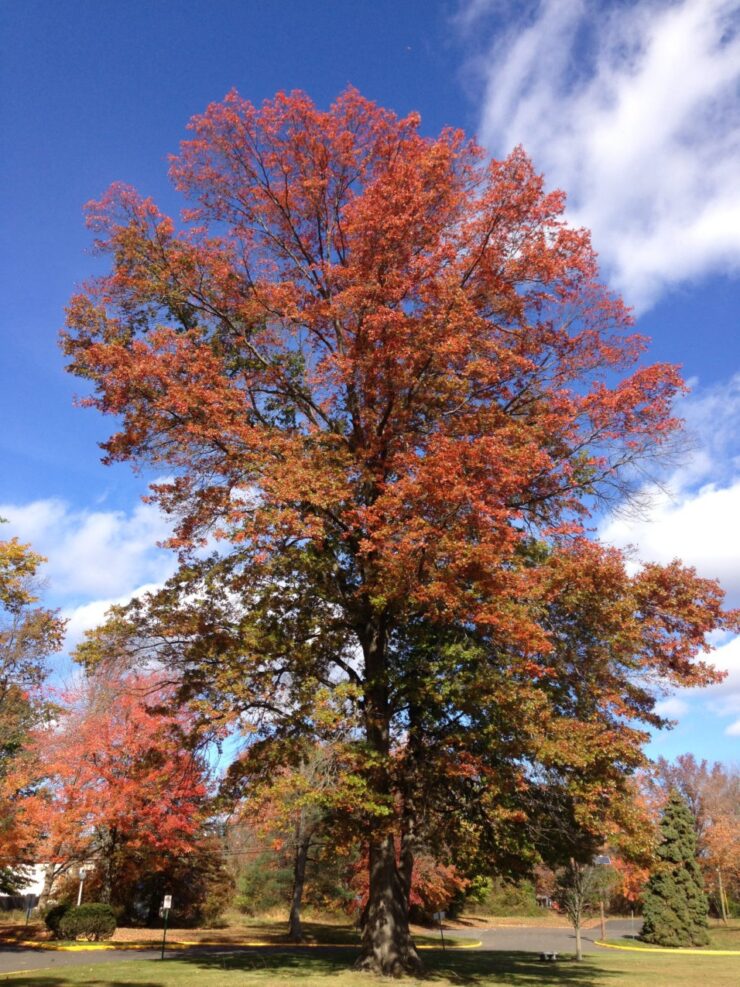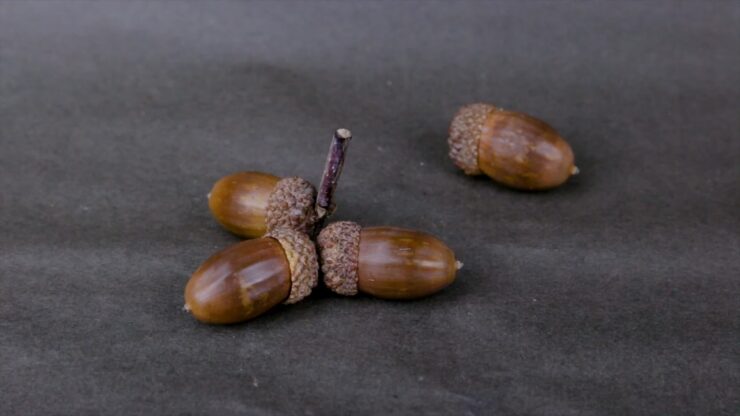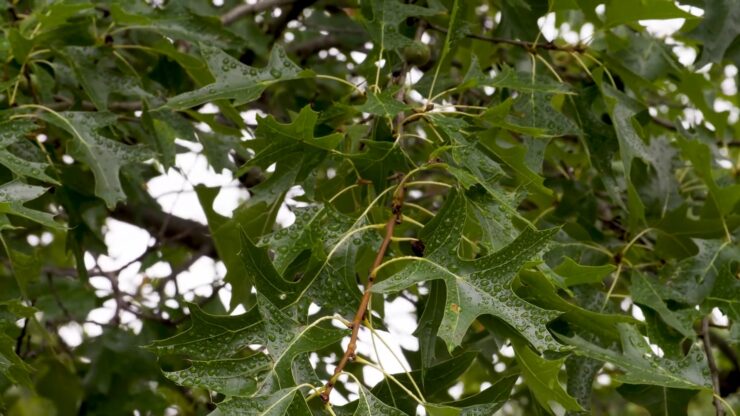Pin oak (Quercus palustris) is a medium-sized tree that has a distinctive pyramidal form.
The leaves are simple, alternate, 3 to 6 inches long. Pin oak has 5 to 9 bristle-tipped lobes with very deep sinuses that extend almost to the midrib.
Pin oak fruit is a small acorn 1/2 inch long, round but flat at the cap.
The bark of the pin oak is Gray-brown and very tight and thin. Remains smooth for many years but eventually develops thin ridges and furrows.
As with all oaks, acorns are valuable food for many animal species including turkey and deer.
Pin oak is a term that is commonly used in the South in reference to water oak, laurel oak, shingle oak, and willow oak.
Pin oaks can be found from southwestern New England west to extreme southern Ontario, southern Michigan, northern Illinois, and Iowa; south to Missouri, eastern Kansas, and northeastern Oklahoma; then east to central Arkansas, Tennessee, central North Carolina, and Virginia.
Landscaping and Ornamental Use

Pin oak is a favorite in landscaping. Its pyramidal shape, green leaves in summer, and red foliage in fall make it visually appealing. It adapts well to urban environments, resisting pollution and poor soil conditions. This makes it ideal for parks, streets, and gardens.
Urban planners often select pin oak for its fast growth. It provides quick shade and enhances the aesthetic appeal of cityscapes. Its ability to thrive in different soil types, including poorly drained ones, adds to its popularity. Homeowners and city planners appreciate pin oak for its beauty and resilience.
Timber and Wood Products

Pin oak wood is highly valued in the timber industry. It is used to make furniture and cabinets, prized for its fine, uniform texture and strength. This wood is also used for flooring and paneling, adding elegance and durability to interiors.
Another practical use of pin oak is as firewood. Its high heat value makes it an efficient and reliable source of fuel. The versatility of pin oak wood contributes significantly to its economic importance.
Wildlife Habitat

Pin oak plays a crucial role in supporting wildlife. Its acorns provide a vital food source for deer, squirrels, and various bird species. The dense foliage offers shelter and nesting sites for birds and small mammals, enhancing biodiversity in its habitat.
The ecological benefits of pin oak extend beyond providing food and shelter. Its presence in natural landscapes supports a diverse range of species, promoting a balanced and healthy ecosystem. Conservationists and wildlife enthusiasts value pin oak for its contributions to nature.
Environmental Benefits

Pin oak is instrumental in controlling soil erosion. Its extensive root system helps stabilize the soil, making it useful in erosion control projects. This tree also contributes to carbon sequestration, playing a role in mitigating climate change by absorbing carbon dioxide from the atmosphere.
Planting pin oak in areas prone to soil erosion can prevent land degradation and promote soil health. Its ability to thrive in various conditions, including wet soils, enhances its effectiveness in such projects. Environmentalists and land managers recognize pin oak’s value in preserving the environment.
Growth Characteristics
Pin oak grows quickly, making it a preferred choice for those seeking rapid results. It typically reaches heights of 60-70 feet, with a spread of 25-40 feet. This tree prefers moist, well-drained soils but can tolerate wet conditions. Once established, it exhibits good drought tolerance.
Regular maintenance, including pruning, ensures that pin oak maintains its shape and health. Removing dead or lower branches prevents interference with pedestrian or vehicle traffic. Proper care allows pin oak to thrive and provide its many benefits effectively.
Challenges and Considerations
Pin oak offers many advantages but also faces challenges. It is susceptible to chlorosis in alkaline soils due to iron deficiency. Addressing this issue requires soil amendments and proper fertilization to ensure healthy growth.
Pests and diseases can also affect pin oak. Oak wilt poses a threat to its health. However, pin oak generally remains hardy and resilient with appropriate care and management. Regular monitoring and preventive measures help maintain its vitality.
Conclusion
Pin oak is a tree with significant value in landscaping, timber production, wildlife support, and environmental conservation. Its aesthetic appeal, rapid growth, and resilience make it a preferred choice in various settings. The ecological and economic benefits of pin oak underscore its importance in maintaining balanced ecosystems and supporting human needs.

